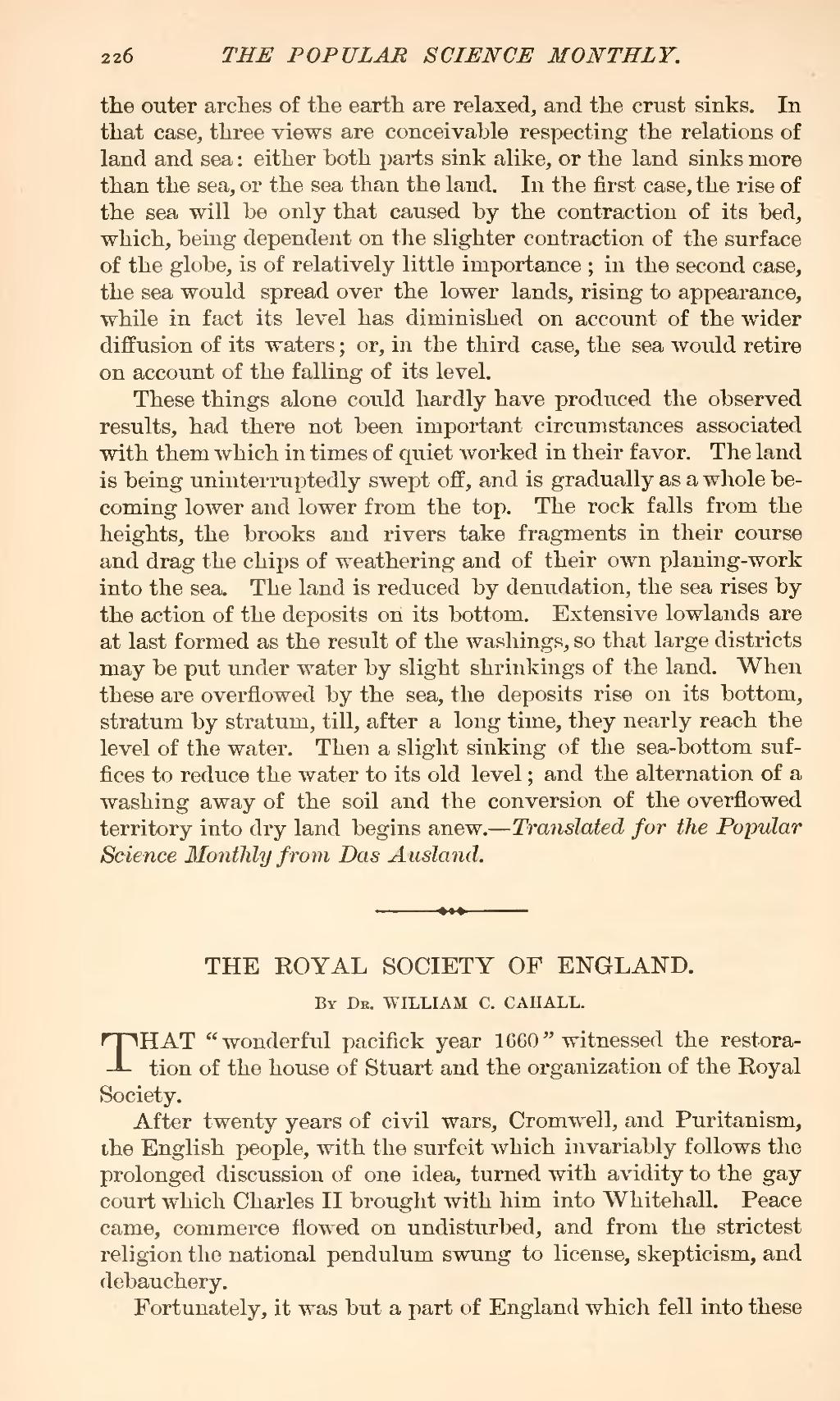the outer arches of the earth are relaxed, and the crust sinks. In that case, three views are conceivable respecting the relations of land and sea: either both parts sink alike, or the land sinks more than the sea, or the sea than the land. In the first case, the rise of the sea will be only that caused by the contraction of its bed, which, being dependent on the slighter contraction of the surface of the globe, is of relatively little importance; in the second case, the sea would spread over the lower lands, rising to appearance, while in fact its level has diminished on account of the wider diffusion of its waters; or, in the third case, the sea would retire on account of the falling of its level.
These things alone could hardly have produced the observed results, had there not been important circumstances associated with them which in times of quiet worked in their favor. The land is being uninterruptedly swept off, and is gradually as a whole becoming lower and lower from the top. The rock falls from the heights, the brooks and rivers take fragments in their course and drag the chips of weathering and of their own planing-work into the sea. The land is reduced by denudation, the sea rises by the action of the deposits on its bottom. Extensive lowlands are at last formed as the result of the washings, so that large districts may be put under water by slight shrinkings of the land. When these are overflowed by the sea, the deposits rise on its bottom, stratum by stratum, till, after a long time, they nearly reach the level of the water. Then a slight sinking of the sea-bottom suffices to reduce the water to its old level; and the alternation of a washing away of the soil and the conversion of the overflowed territory into dry land begins anew.—Translated for the Popular Science Monthly from Das Ausland.
| THE ROYAL SOCIETY OF ENGLAND. |
By Dr. WILLIAM C. CAHALL.
THAT "wonderful pacifick year 1660" witnessed the restoration of the house of Stuart and the organization of the Royal Society.
After twenty years of civil wars, Cromwell, and Puritanism, the English people, with the surfeit which invariably follows the prolonged discussion of one idea, turned with avidity to the gay court which Charles II brought with him into Whitehall. Peace came, commerce flowed on undisturbed, and from the strictest religion the national pendulum swung to license, skepticism, and debauchery.
Fortunately, it was but a part of England which fell into these
